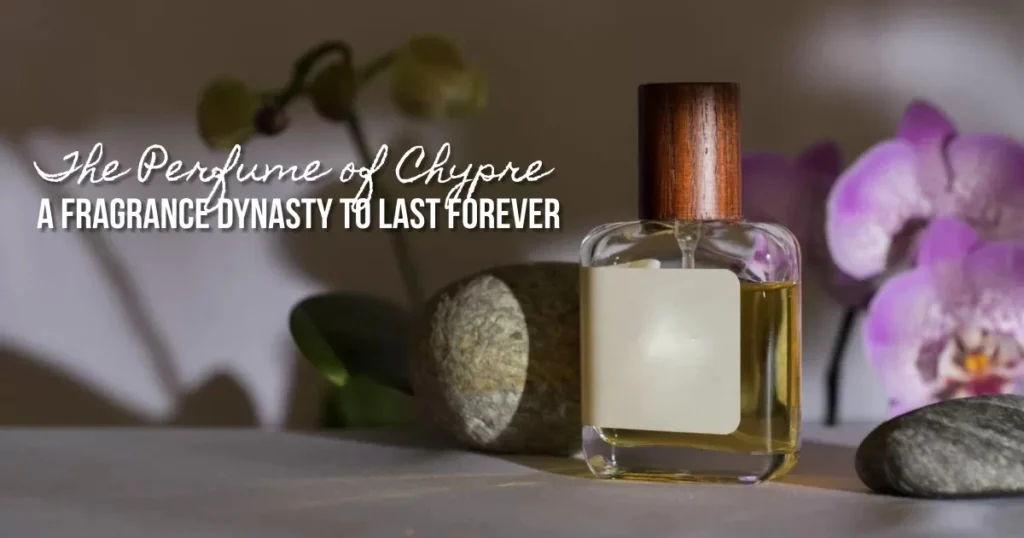In the world of perfumery, the term chypre holds an air of mystery, elegance, and complexity. Perfume connoisseurs and fragrance enthusiasts often speak of it in reverence. But what exactly is the chypre fragrance family, and what is the chypre perfume meaning that has captivated generations of scent lovers? Let’s dive deep into the origins, components, and significance of this iconic category in fragrance history.
The Historical Roots of Chypre
The term chypre (pronounced “sheep-ra”) originates from the French word for Cyprus, the Mediterranean island. The earliest known use of chypre in perfumery can be traced back to ancient times, where natural materials such as labdanum and oakmoss were used in aromatic ointments.
However, it was in 1917 when François Coty revolutionized the modern perfume industry by launching a fragrance named Chypre. This perfume laid the foundation for what would become the chypre fragrance family — a bold, structured blend of citrus top notes, floral middle notes, and a mossy-animalic base.
Understanding the Chypre Perfume Meaning
To truly appreciate the chypre perfume meaning, one must understand its unique olfactory construction. A typical chypre fragrance is built upon a triadic structure:
-
Top Note: Often a burst of bergamot or citrus.
-
Heart Note: Usually a floral or fruity blend.
-
Base Note: Defined by earthy, woody, and mossy elements, especially oakmoss, patchouli, and labdanum.
This structure gives chypre perfumes a distinct evolution on the skin, where the initial freshness slowly gives way to depth and sensuality. The contrast between brightness and earthiness is what makes chypre fragrances so alluring and timeless.
Key Components of the Chypre Fragrance Family
Each perfume family has defining characteristics, and the chypre fragrance family is no exception. Let’s look at some core ingredients that make a fragrance qualify as a chypre:
1. Bergamot
This citrus fruit provides the bright, fresh opening. It lifts the heavier base notes and sets the tone for a classic chypre.
2. Oakmoss
This earthy, green-smelling lichen is perhaps the most crucial component. It adds a mossy richness and depth.
3. Labdanum
A resin extracted from the cistus plant, labdanum brings a leathery, amber quality that enhances the perfume’s sensuality.
4. Patchouli
This note adds complexity and earthiness. It also helps to anchor the base and prolong longevity.
5. Floral Notes
Depending on the variant, floral notes such as rose, jasmine, or ylang-ylang are included to add softness and beauty to the middle of the scent.
These ingredients are blended to create a perfume that evolves beautifully over time, embodying the chypre perfume meaning — a journey from freshness to seduction.
Sub-Categories Within the Chypre Family
Over time, the chypre fragrance family has evolved to include several subcategories, each with its twist while retaining the foundational chypre structure.
Chypre Floral
These chypres incorporate more prominent floral notes, making them elegant and suitable for everyday wear. Think of jasmine, rose, and lily-of-the-valley.
Chypre Fruity
A modern spin that combines fruit (like peach or plum) with the classic chypre base, adding a playful and youthful dimension.
Chypre Leather
Smokier and more animalic, these perfumes are powerful and assertive — perfect for those who love bold scents.
Chypre Green
Incorporating green notes like galbanum and green leaves, these perfumes feel fresh yet grounded.
Why the Chypre Fragrance Family Remains Timeless
Perfume trends come and go, but the chypre fragrance family endures. Why?
1. Versatility
Chypres can be tailored to suit almost any occasion — from office wear to romantic evenings — thanks to their balance of freshness and depth.
2. Complexity
Few perfume families offer such a nuanced scent journey. The chypre perfume meaning lies in this transformation: the way a chypre begins fresh and finishes warm and enveloping.
3. Gender Neutrality
While some may lean floral or musky, most chypres sit comfortably in the unisex category, appealing to a broad audience.
Modern Revival of Chypre Scents
In recent years, the chypre fragrance family has seen a resurgence. Perfumers are revisiting this classic structure, using modern techniques and new interpretations to appeal to today’s fragrance lovers.
For example, synthetic substitutes for oakmoss (due to IFRA restrictions) are being used to mimic the traditional base. This ensures safety and sustainability without compromising the classic appeal of a chypre.
Iconic Chypre Perfumes You Should Know
-
Coty Chypre (1917): The original that started it all.
-
Miss Dior (1947): A floral chypre that embodies femininity and class.
-
Narciso Rodriguez for Her: A musky modern take on the chypre style.
-
Chanel Cristalle: A green, sparkling variation ideal for warmer climates.
-
Mitsouko by Guerlain: One of the most revered fruity chypres in history.
Each of these embodies the chypre perfume meaning in a unique way while staying true to the core DNA.
Tips for Wearing a Chypre Perfume
-
Let it settle: Chypres unfold slowly. Wait a few minutes after application to enjoy its complexity.
-
Match it with mood and attire: A sophisticated outfit and a composed mood go best with a chypre.
-
Layer carefully: Because of its depth, avoid clashing with strong body lotions or oils.
Conclusion: More Than Just a Scent
The chypre fragrance family is more than a group of perfumes — it’s a tradition, a symbol of sophistication, and an olfactory art form. To understand the chypre perfume meaning is to appreciate the elegance of contrasts: the lightness of citrus with the weight of moss, the softness of flowers with the strength of resins.
If you’re on a quest to explore truly timeless and artistic fragrances, then chypre is where your journey should begin.

